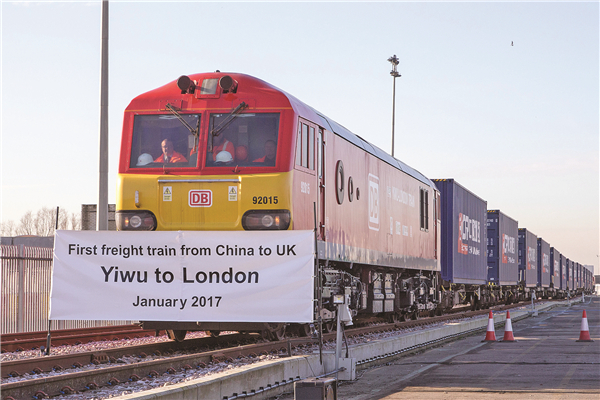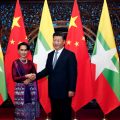
At 8:00 am every morning, the London Stock Exchange opens its trading market with clustered real-time stock prices projected across its central screen, and another busy day starts for the City’s bankers, lawyers and traders.
For hundreds of years, this has been the familiar pace of life in the City of London. But unbeknown to many, a subtle change has swept over London’s capital markets as bankers and traders are increasingly looking East to connect with Belt and Road opportunities, a trend exacerbated by uncertainties caused by Britain’s departure process from the EU.
“Countries along the routes need to invest trillions of US dollars in developing their infrastructure in the years ahead. Financing the Belt and Road is a huge endeavor,” said Ian Stuart, CEO of HSBC UK.
HSBC estimates that Belt and Road development projects will cost up to $6 trillion in the next 15 years, while PricewaterhouseCoopers estimates the costs at $5 trillion.
HSBC has already financed nearly 100 projects in Belt and Road countries. Meanwhile, Standard Chartered has fund over 50 Belt and Road deals in 2017 alone, and last December it announced an additional $20 billion commitment to Belt and Road projects by 2020.
Essentially, what makes Belt and Road infrastructure projects attractive as financing opportunities for London’s biggest banks is their attractive projected return, relative to risks.
The high return comes from stable revenue streams to be generated once these infrastructure projects come into operation – supported by strong economic growth from countries enjoying the new infrastructure. The low risk, for private sector financiers, derives partly from efforts by government and multinational development bank vehicles that contribute the first, and most risky dollars, to each project.
“The participation of highly creditworthy multilateral development banks and other public-sector investors like the can definitely help to ‘crowd in’ private capital,” said Stuart.
China is already leading the initiative’s financing efforts. At the Belt and Road forum, China committed an additional contribution of $14.6 billion to the Silk Road Fund, adding to its initial commitment of $40 billion in 2014.
The China-led Asian Infrastructure Investment Bank has approved $2.8 billion for 17 Belt and Road projects. China Development Bank had about $112 billion of outstanding loans in and the Export-Import Bank of China has extended about $90 billion of loans to such projects.
The British government has keenly supported the initiative. “London is the natural Western end to the Belt and Road,” said Charles Bowman, lord mayor of the City of London.
“In London we have the knowledge as well as highly liquid debt and equity capital markets, with a large global investor base. This makes us an important partner for China,” said Bowman.
Last year the City of London led the creation of a Green Belt and Road Investor Alliance to encourage funding into environmentally friendly projects along the Belt and Road. This year it will also co-host a Belt and Road forum in London.
Former prime minister David Cameron accepted a lead role with a newly proposed 750-million-pound ($1 billion) China-UK fund, which gathers private sector funding from both countries to invest into Belt and Road projects.
The fund was announced as one of 72 outcomes from the 9th UK-China Economic and Financial Dialogue which took place in Beijing last December.


